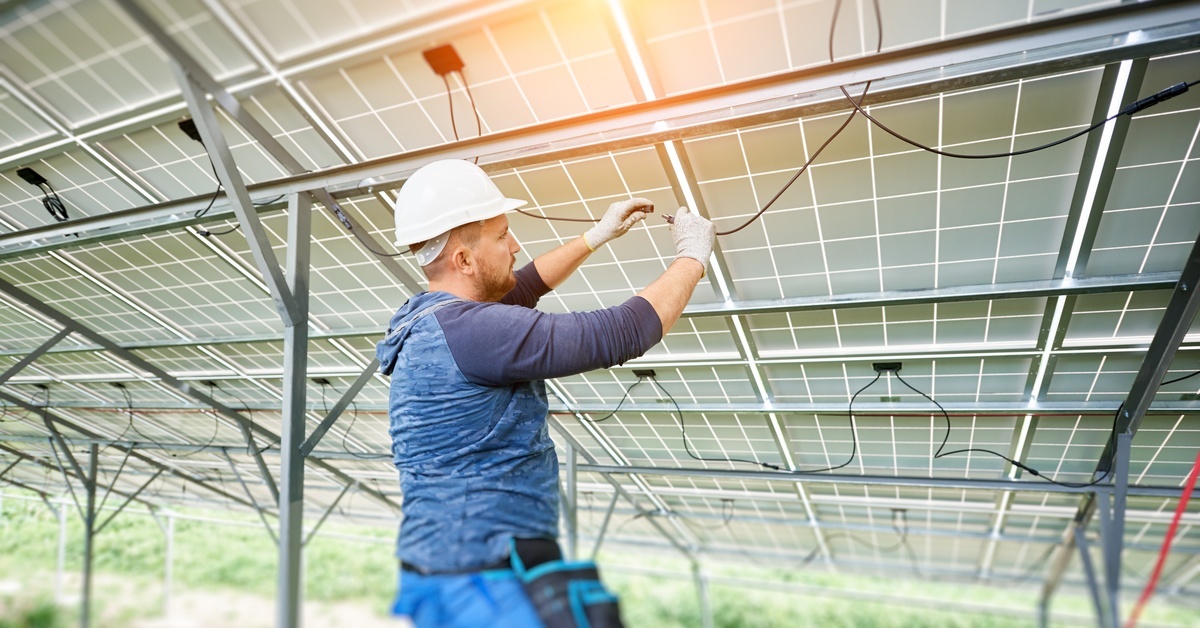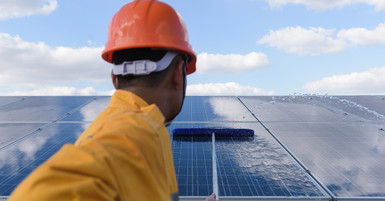Apr 28th 2025
Debunking Common Solar Energy Myths and Misconceptions
If you’re looking for a chance to incorporate green initiatives for your business, consider installing an independent solar grid. While many business owners want to invest in solar panels for financial and environmental reasons, they may later feel discouraged due to some misconceptions. Let’s debunk the most common solar energy myths and misconceptions to learn more about solar regulations, installation, and maintenance protocols.
Solar Energy Systems Are Too Expensive for Businesses
Business owners considering solar energy may hold off on a solar installation due to its initial investment cost. Many people believe that solar installations are too expensive with minimal return, however, this assumption fails to take into account financial incentives and long-term savings.
The Cost of Solar Installation
The initial price of system installation may seem too costly for businesses to pursue. Aside from purchasing photovoltaic (PV) panels, owners must also factor in mounting systems and inverters, which puts strain on their company's budget. Nevertheless, prices for solar installations have dropped significantly over the past decade to make it an increasingly cost-effective energy source.
Government Subsidies and Incentives
The initial expenses of solar installation are higher than other business renovations at first, but many government policies make solar installations more affordable. While these policies differ by region, you may find that you qualify for a tax credit in your state or an installation reimbursement.
For example, the federal solar tax credit in the United States allows businesses to deduct 30% of their installation costs from their taxes. Several states also include grant funding or rebate programs specific to commercial system owners.
Long-Term Financial Gains
Over the course of using your solar installation, you’ll find that investing in solar will reduce your company’s expenses, thereby saving you money in the long term. By reducing monthly electricity bills, businesses can see a return on their investment in as little as five to seven years. Additionally, as utility rates rise over time, the fixed cost of solar-generated electricity creates increased savings in the long run.
Solar Energy Doesn’t Provide Enough Power for Commercial Needs

Another common misconception that business owners may believe is that a solar setup won’t generate enough energy for their large-scale facility. This concern comes from a misunderstanding of modern solar technology and energy consumption patterns.
How Solar Energy Systems Meet Energy Demands
Businesses can tailor the output capacity of solar installations to meet the energy demands of any facility. By carefully designing and scaling the system, engineers generate sufficient power through a combination of PV panels and energy storage solutions.
To better supply this energy output, owners may choose to install high-efficiency panels and battery systems. If you need a solar energy system large enough to benefit your company, there are resources available for you.
Peak Sunlight Hours and Energy Storage
Commercial solar energy systems now utilize advanced battery storage solutions to capture excess energy generated during peak sunlight hours. This allows owners to reap the benefits of their solar grid regardless of the time of day or weather.
Battery storage systems are particularly effective in offsetting cloudy or nighttime periods. Businesses can use this stored energy for a seamless and reliable power supply throughout the day and night. Even when your company encounters downtime or a power outage in your local area, these systems will provide the energy your business needs to get back to work.
Supplementary Power Sources
Business owners who are wary of being fully energy independent may choose to ingrate solar energy alongside traditional power grids for a hybrid energy system. These setups allow businesses to prioritize solar while using the grid as a backup only when needed. For a smaller, low-investment installation, these energy systems will benefit your company for long-term success.
Solar Energy Systems Are Too Complicated To Maintain
Some business owners worry that maintaining a solar energy system will be burdensome and costly. However, modern advancements in solar technology simplify maintenance for technicians and operators. You can debunk this common solar energy myth by incorporating a simple maintenance schedule that boosts your solar grid’s longevity.
Routine Cleaning and Inspection Processes
Maintaining solar panels typically involves periodic cleaning for optimal performance. For example, dust, debris, and bird droppings can reduce efficiency, but operators can wipe off these particles with routine cleaning. Simply clean the surface once or twice a year, or contact reputable installers who can provide detailed cleaning guides specific to your panels.
To mitigate severe repairs and boost your system’s longevity, apply solar panel labels that provide useful information regarding troubleshooting instructions and hazardous zones around your solar grid. You can get the most out of your solar grid and stock up on solar PV labels for your company’s installation by partnering with Get Solar Labels today.
Monitoring System Performance
With the help of advanced monitoring tools, tracking your solar grid's performance in real time has never been easier. Digital apps and dashboards alert users to malfunctions or dips in efficiency, which empowers business owners to resolve potential issues promptly. If you find anything wrong with your system, schedule repairs immediately to avoid larger maintenance costs.
Longevity of Modern Solar Panels
Leading manufacturers design PV panels to withstand harsh weather conditions and, depending on the company, offer warranties lasting ten to fifteen years. Aside from occasional inverter replacements, properly installed systems can operate efficiently for decades with minimal intervention. With proper maintenance and repairs, you’ll preserve the longevity of your solar installation with ease.
Solar Installations Are Only Suitable for Large Buildings

Small or medium-sized businesses may not have the roof space for a solar installation, but you don’t always need to mount your solar panels to your building. There are many modern-day installation designs that cater to a variety of business layouts. Partner with your specialist to determine the best way to install your solar grid.
Customizable System Sizes
Solar installations are scalable and adaptable to a wide variety of roof sizes. Smaller businesses, for instance, can benefit from highly efficient panels that generate ample energy even over a limited surface area. Whether you need extra room on your roof for personnel access or an HVAC system, it’s possible to plan around these existing structures to install a solar grid on your roof.
Ground-Mounted Solar Options
For companies with minimal usable roof space, ground-mounted solar energy systems are an excellent alternative. These installations use vacant land near a property, and you can customize the design to maximize sun exposure. Find an area with ample space and sunlight to avoid blocking your panels with trees or other structures.

